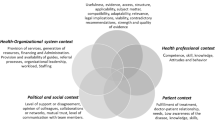Abstract
Basic urolithiasis research into the causes for stone formation has been stagnating for a long time. Emergence of effective stone treatment modalities has shifted the public and clinicians’ focus away from basic research towards symptomatic treatment solutions. This has occurred in spite of urolithiasis being a highly recurrent disease with an enormous socio-economic impact warranting a prophylactic and recurrence-preventing approach. An integrated, multidisciplinary translational platform has been developed in the form of urolithiasis meetings bringing together urologists, radiologists, nephrologists, basic scientists, dieticians and other stake holders interested in stone disease, for an exchange of knowledge, mutual education and understanding, and professional networking. Traditionally, such combined meetings are split into sessions addressing the specific interests of clinicians and scientists. At the recent Experts in Stone Disease Symposium we devised and implemented a program which mixed clinical and basic science activities throughout. We interviewed delegates between sessions regarding their acceptance of this novel concept using a standardized questionnaire. Sessions were well-attended, alleviating our initial anxiety that delegates would not appreciate a “no-choice” program. Of the 74 delegates who were interviewed, 60 (81 %) were urologists, and 14 (19 %) were non-urologists such as nephrologists, dieticians, and students. This is representative of the overall distribution of delegates at the conference. 71 % felt that a closer co-operation and understanding between clinicians and scientists will ultimately benefit both groups, as well as patients; 95 % found the mixed session approach beneficial, with half appreciating it as very good and innovative; 94 % believed that they had derived useful learnings from the “other side”; 94 % found that such mixed sessions are useful for their future work and understanding of the urolithiasis field as a whole; 94 % agreed that mixed meetings of this type are useful in enhancing networking between the different stake holders in urolithiasis treatment and research. Finally, 85 % would like to visit future mixed session meetings, and 89 % would encourage their juniors to attend, too. Not only was a platform created to facilitate multidisciplinary exchange and networking, but delegates from several different backgrounds were encouraged to attend presentations in disciplines other than their own. The results of our survey confirm an overwhelmingly positive acceptance of this integrated multidisciplinary concept for stone meetings. As such, we are encouraged to continue with this concept in future conferences.
Similar content being viewed by others
References
Khan Y, Mihalko WM (2007) Translating science from the benchtop to the bedside. AAOS Now. http://www.aaos.org/news/bulletin/sep07/research3.asp. Accessed 23 Dec 2014
Restifo LL, Phelan GR (2011) The cultural divide: exploring communication barriers between scientists and clinicians. Dis Model Mech 4(4):423–426
Roberts SF, Fischhoff MA, Sakowski SA, Feldman EL (2012) Perspective: transforming science into medicine: how clinician–scientists can build bridges across research’s “valley of death”. Acad Med 87(3):266–270
Eberli D, Atala A (2009) Basic science research in urology training. Indian J Urol 25(2):217–220
Pfeiffer SI, Burd S, Wright A (1992) Clinicians and research: recurring obstacles and some possible solutions. J Clin Psychol 48(1):140–145
Rahman S, Majumder MA, Shaban SF, Rahman N, Ahmed M, Abdulrahman KB, D’Souza UJ (2011) Physician participation in clinical research and trials: issues and approaches. Adv Med Educ Pract 7(2):85–93
Rehman J (2014) Physician-scientist: the newest endangered species. Scientific American. http://blogs.scientificamerican.com/guest-blog/2014/07/05/the-newest-endangered-species-physician-scientists/. Accessed 23 Dec 2014
Stevenson FT, Bowe CM, Gandour-Edwards R, Kumari VG (2005) Paired basic science and clinical problem-based learning faculty teaching side by side: do students evaluate them differently? Med Educ 39(2):194–201
Carrel T (2002) The relationship between surgeon and basic scientist. Transpl Immunol 9(2):331–337
Conflict of interest
None declared.
Author information
Authors and Affiliations
Corresponding author
Rights and permissions
About this article
Cite this article
Buchholz, N.N.P., Howairis, M.E.F.E., Durner, L. et al. Acceptance of mixed scientific and clinical activities in a sub-speciality urology meeting. Urolithiasis 43, 101–105 (2015). https://doi.org/10.1007/s00240-015-0759-3
Received:
Accepted:
Published:
Issue Date:
DOI: https://doi.org/10.1007/s00240-015-0759-3




